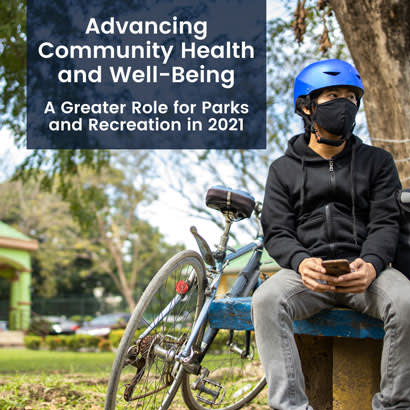
Here we are. The end of 2020. A year most notably marked by the coronavirus (COVID-19) pandemic that has claimed the lives of nearly two million people across the globe. At the same time, society has been challenged by the traumas of a growing economic, hunger and mental health crisis, social and political unrest, more powerful and devastating natural disasters, and a racial justice awakening that has emerged across the nation. It has been a difficult year and we have all been affected, both personally and professionally (which often crossed over one another as we virtually welcomed colleagues into our homes where we balanced children, remote learning, barking dogs, social cats, leaf blowers and more).
But as we look back on 2020, which will undoubtedly be remembered as one of the most difficult and complex periods of our lives, there are also some positives that can be found. One of those positives has certainly been the vital role that local, close-to-home parks, green spaces, and recreational programs and services have played in our day-to-day lives. More people are appreciating and relying on these spaces and programs to support and strengthen their physical and mental health than ever before. As we enter a new year, what we hope will be a year marked by reckoning, rebuilding, reimagining, and celebrating the resiliency of the human spirit, parks and recreation will continue to play a vital role in advancing community health and overall well-being.
In 2021, park and recreation professionals should focus efforts in these areas as we recover from the pandemic and other challenges, so we can ensure all people can thrive:
Centering Health Equity
When health inequities are eliminated, the health of all individuals and their communities improves. Many park and recreation agencies have made progress in centering health equity in their work, however, there is still much work to be done to eliminate and prevent health inequities. The COVID-19 pandemic has illuminated these inequities while disproportionately impacting Black, Indigenous and people of color, low-income communities, and other historically marginalized and underserved populations. As new programs, services or park improvement projects are designed and implemented, park and recreation professionals must work in partnership, and in power, with communities most impacted by COVID-19 to achieve health equity.
Meeting Community Health and Social Needs
As gaps in accessing immediate health and social resources widened across communities this year, park and recreation professionals championed efforts to leverage facilities, staffing and other assets to meet those needs. As we enter 2021, these needs will continue to exist and may even continue to grow. Parks and recreation can leverage their role as trusted, community-based institutions to support access to healthy food, shelter, technology, childcare, benefit programs, medicine, clothing and healthcare services, including COVID-19 testing and vaccination.
Driving Community Healing and Leading the Conversation on Mental Health
The COVID-19 pandemic has exacerbated an already alarming substance use and mental health crisis. Drug overdose, alcohol-related deaths and suicide — known together as the “deaths of despair” — have been increasing across the U.S. As these deaths are often associated with poor socioeconomic conditions, loneliness, isolation and uncertainty, researchers fear that COVID-19 could result in significantly more deaths of despair. Yet, parks and recreation plays a significant role in promoting and protecting mental health and well-being. In 2021, as more people struggle with mental health conditions, it is imperative that we confront the stigmas of substance use and mental health disorders and take more intentional actions to strengthen mental health supports in communities. Park and recreation professionals can lead this charge.
Leveraging Innovation and Creativity
Throughout the pandemic, park and recreation professionals have not only demonstrated the dedication they have for their communities, but they have taken their creativity and innovative thinking to another level. From virtual fitness, mindfulness, academic and cultural enrichment programming, to safe, physically distant family engagement activities like drive-in movies and driveway dance parties, to shutting down streets to allow for more space to safely move, we’ve seen new programs and initiatives quickly emerge as community favorites. This creative thinking (and many of these trendy programs) will be here to stay in 2021.
Doubling Down on Investing in Youth
On a recent call with urban park and recreation leaders, the message was clear. Society has not done enough to support youth throughout the COVID-19 pandemic. Youth, especially youth from low-income communities, have missed out on learning, socializing and playing. Others have lost out on vital supports — school meals, counseling services, afterschool and summer programs, youth sports, mentorship programs. And those that do not live near a quality park, green space, or in a safe neighborhood have not been able to enjoy time outdoors. All have experienced the traumas of this moment and in 2021, park and recreation agencies need to keep this top of mind to best support youth and their unique needs this year.
We know how hard you have worked this year — adapting to changing and challenging circumstances almost every day while remaining committed to your mission, your teams and your communities — and the public recognizes how essential your work has been for their mental and physical health. In 2021, this role will be even greater. And if anyone can rise to the challenge, it’s park and recreation professionals.
Allison Colman (she/her) is NRPA’s Director of Health.

